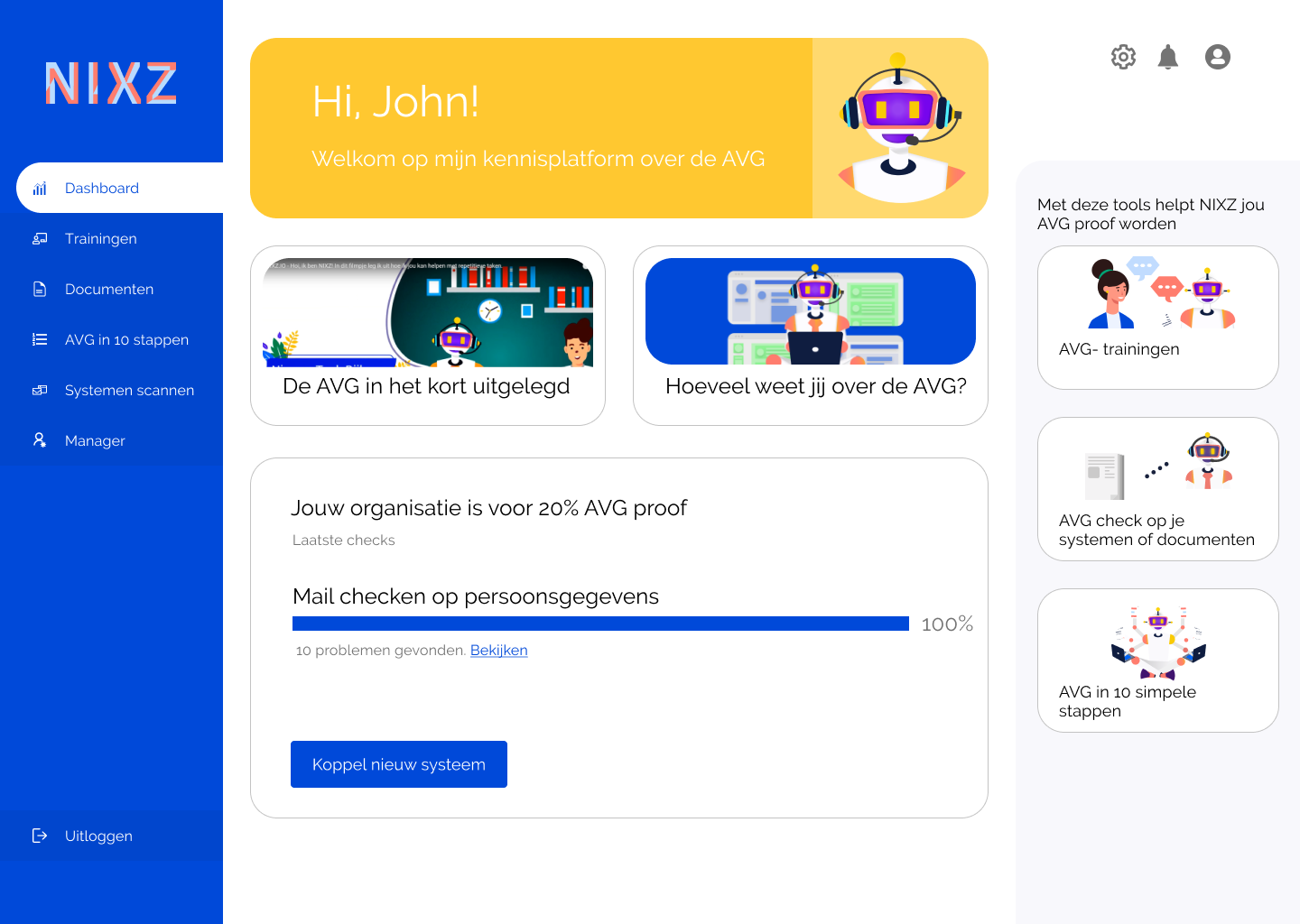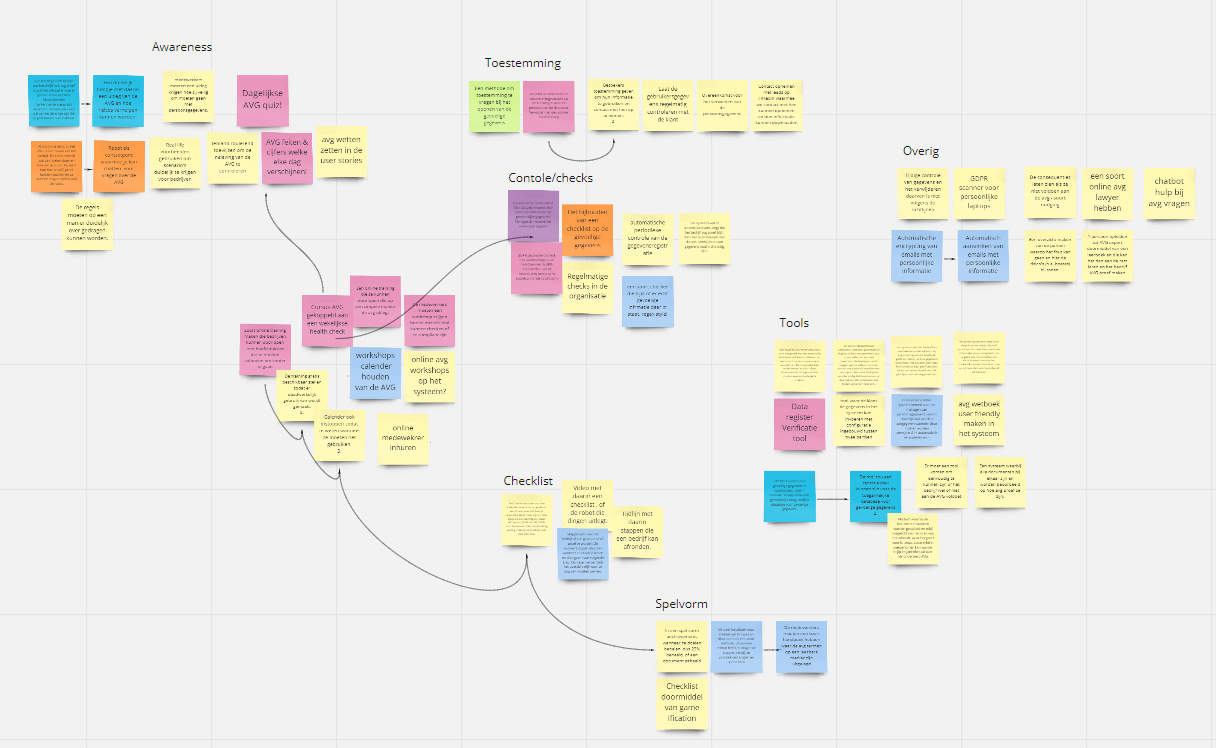
The problem is that many private organizations are not yet GDPR compliant. Organizations don't know what they need to do to become GDPR compliant, or it costs too much time and money. As a result, organizations risk receiving high fines.
First, research was conducted to understand the users' problem and to find out when SME organizations comply with GDPR. The main research question was: "Can a tool support organizations in their transition to GDPR compliance and how?" To answer this question, sub-questions were formulated to structure the research. I used various techniques and methods. First, desk research was used to understand what GDPR entails and when SME organizations are GDPR compliant. Then I defined the user group. Goals and needs were also researched through expert and user interviews.
From the user group, I created personas and user needs. These provide guidelines for the concept and ultimately the design. A competitive analysis was also conducted to discover a new market. Below you can see the personas.
Yes, a NIXZ tool could provide online support by automating the process of becoming GDPR compliant in a simple way. By having a checklist, step-by-step plan, or flowchart integrated into the website flow, users can be guided through the process. One of the required processes to become GDPR compliant is a processing register. This helps create awareness of personal data processing within the organization. The tool could be expanded in the future with other processes, such as privacy assessments, data breach reporting, etc.
Key Findings:
Based on insights from the research report, ideas can be conceived. Through various brainstorming sessions, insights can be formed into design choices and concepts. In total, I used three brainstorming sessions. I conducted the brainstorming sessions using the 6-3-5 method. The 6-3-5 method involves 6 participants, each writing three ideas on paper. They pass this paper to the next participant. Each respondent adds three new ideas again. These can also be iterations on the neighbor's ideas. After this is repeated 5 times until the sheets are full, it's time to discuss and evaluate the ideas and solutions. Due to COVID-19, I chose to do the brainstorming sessions online. For this, I used the Miro tool. On this platform, online post-its can be placed. Participants can work together in a project group. Based on brainstorming sessions, a concept was conceived.

After the final concept was approved by the client, a structure was conceived for the prototype. For this, a product journey was made to clearly outline the navigation structure. This is the structure that users will follow during their process.
Based on the Product Journey, I started sketching and developed a paper prototype from these. The paper prototype is a low-threshold way to test with users. Expert reviews were conducted on the paper prototype with UX Designers and GDPR experts. After the test, I incorporated the insights into the final design.